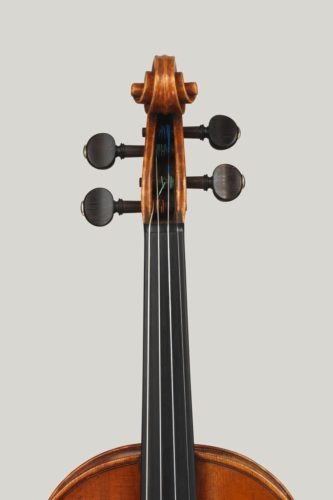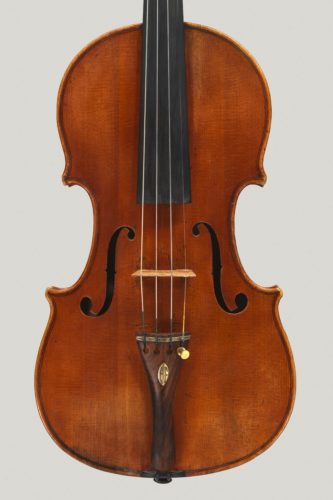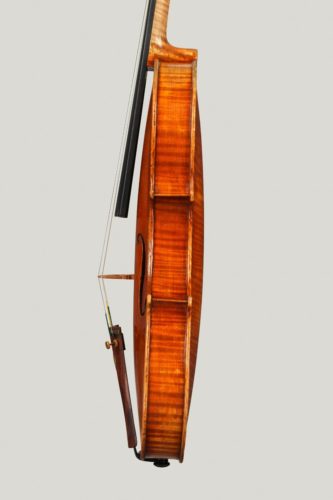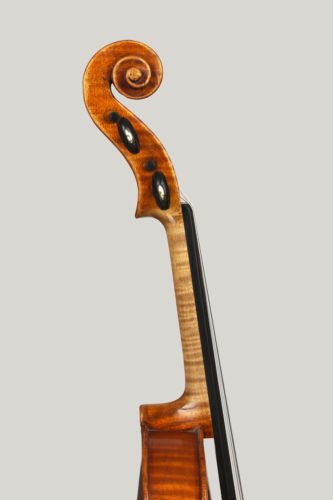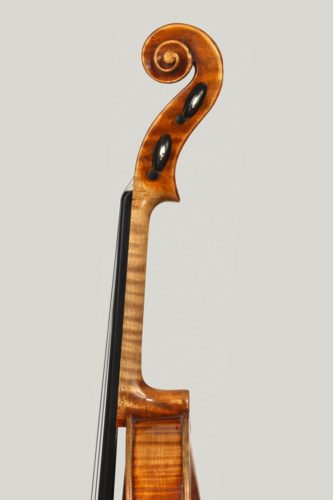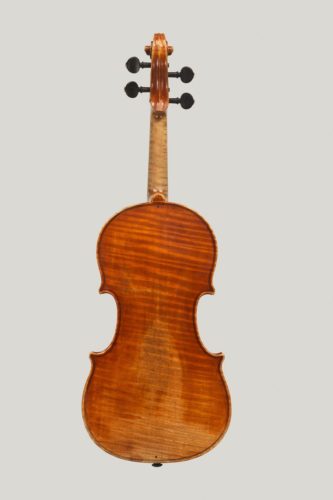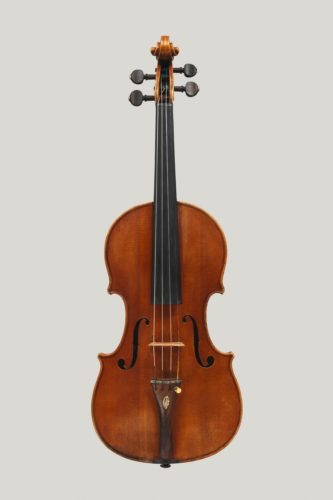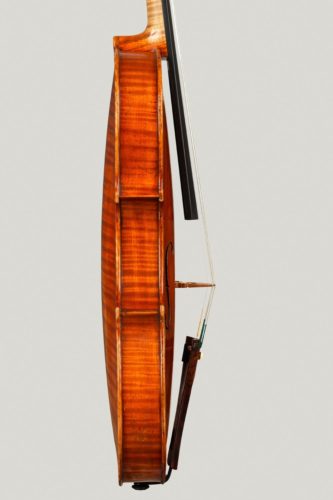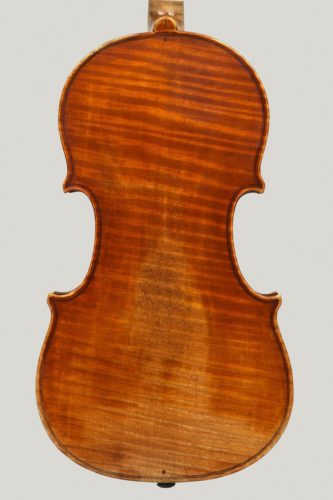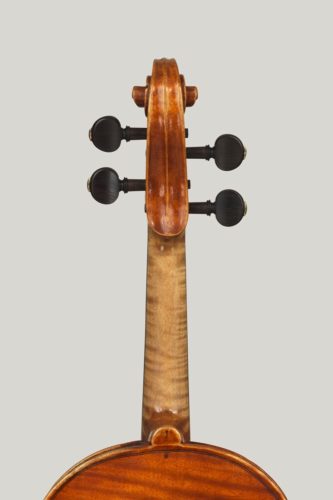Giovanni Battista Guadagnini
Violin made by Giovanni Battista Guadagnini in Milan in 1751. Stephan Barratt-Due plays on this instrument.
Giovanni Battista Guadagnini was perhaps the greatest and certainly the most interesting maker working outside Cremona in the second half of the 18th century. His work has risen in value and reputation in modern times, and the definitive account of his life and work was written by Duane Rosengard and published in 2000.
Guadagnini left behind him a remarkably varied body of work, and a relatively large amount of documentation. This was partly due to his having settled and worked in five different cities of northern Italy during his life, but also because of his contact with the remarkable violin collector Count Cozio di Salabue, one of the earliest connoisseurs of the violin, and one of the first to write a history of its makers.
Despite his later claims to have been a pupil of Stradivari, it seems most likely that Guadagnini was largely self-taught. He was born in the village of Bilegno in 1711, and began making instruments with startling originality shortly after his arrival in the nearby town of Piacenza. He remained there for nearly a decade, before leaving for Milan in late 1749. From then until 1758 he made what are now considered his masterpieces: violins with a totally distinct form and character, varnished with glorious red tones, and a flexible and powerful voice.
This instrument comes from the first few years in Milan, and has its original label dated 1751. It is a magnificent and superbly well-preserved instrument. The handsome one-piece back is marked with a regular deep flame, the ribs and scroll matching, and the top from two matched pieces of fine-grained mountain spruce. The violin is covered by a superb red varnish of great depth and delicacy, with a fine soft texture. The wood beneath is treated with a rich ground which gives extra vibrancy to the upper layers.
Stylistically it is in transition from the early Piacenza period. The outline is broad and well governed, with a slight peak at the top of the back. The edge and purfling is a little more delicate than in Guadagnini’s later instruments, and the arch flatter, with a shallow but broad recurve around the edges. The lower holes of the soundholes have not yet developed into the eccentric oval shape of later years, but the form of the “f” is already distinctive, with long wings, a sweeping lower half tapering to a slightly closed upper part, and a small top circle.
The scroll is fully representative of his best work, with the nicely concentric but open spiral coming to short and quickly tapering terminus at the widely projecting eye.
The craftsmanship is of a very high order, but the detail is not of the rigid consistency of Stradivari or Amati. There are many individual mannerisms in Guadagnini’s work which are fairly consistent throughout his life, and seen in few if any other makers – which largely supports the view that he was self-taught and of very independent mind. These idiosyncracies are not purely whimsical, but derive from particular techniques of construction which, taken together, seem unique to Guadagnini.
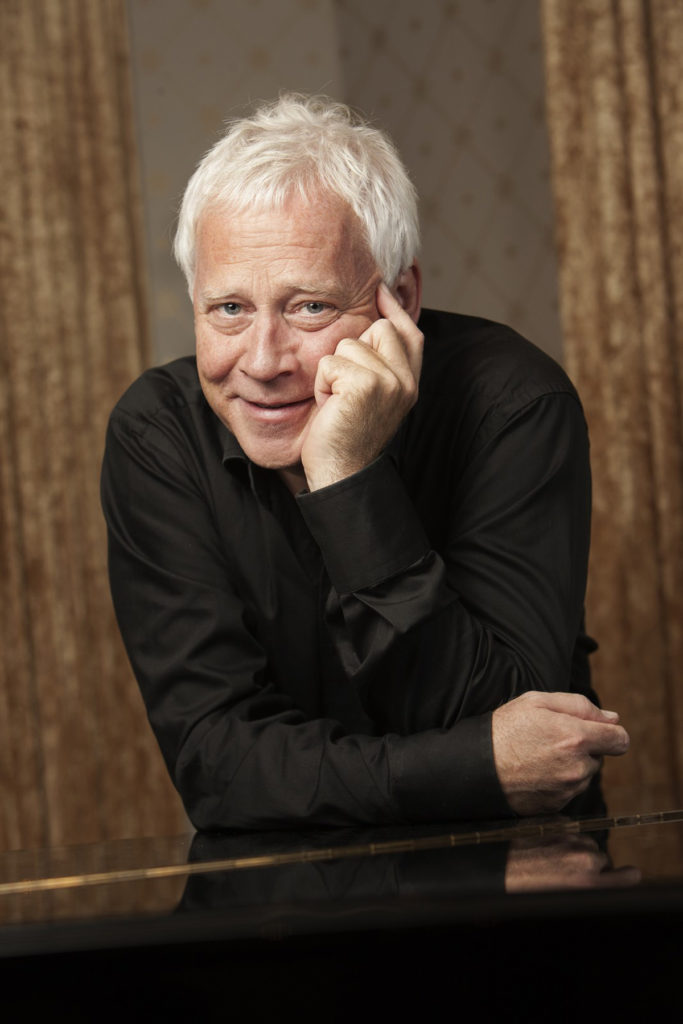
Stephan Barratt-Due
Stephan Barratt-Due heads the Barratt Due Music Institute and has since 1998 been artistic director of the chamber orchestra Oslo Camerata. His performances with orchestras, on concert tours, CD recordings and on television in Norway are countless. In addition, he has also toured most European countries, the USA, South America and Asia.
